Mozambique is home to an incredible array of bird species, with over 600 species of birds living in the country. Located in south-eastern Africa, Mozambique is bordered by the Indian Ocean, Tanzania, Malawi, Zambia, Zimbabwe, and South Africa.
This unique location provides a wide variety of habitats for birds, from coastal wetlands and mangroves to open savannahs, montane forests, and even desert. The country is a paradise for birders, with an exciting selection of exotic and beautiful species waiting to be discovered.
1. Crab-Plover
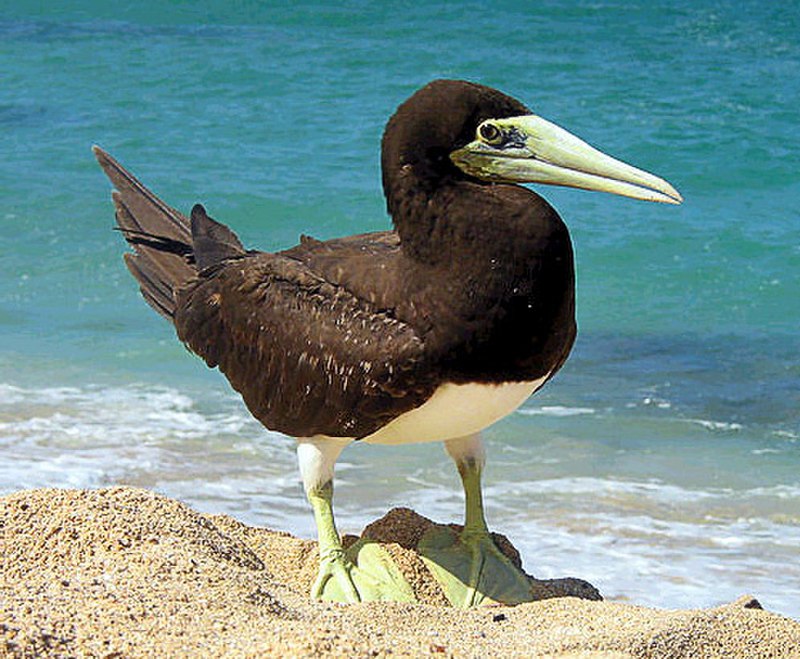
The crab-plover is an exceptional bird which belongs to its own family, Dromadidae. It appears to be closely related to the waders and other Charadriiformes such as auks, gulls and thick-knees.
This species of bird has a unique look; it is white with black markings on its head and wings. Its long bill helps them dig for food in sand or mudflats.
They can also fly up into the air when disturbed by predators or people too close for comfort.
The crab plover spends most of its life near beaches where they feed on crabs, fish eggs and small insects found there.
These birds are highly social during breeding season but solitary at other times throughout their annual cycle making them difficult creatures to spot out in the wild but well worth trying.Scientific classification:
| Kingdom | Animalia |
| Phylum | Chordata |
| Class | Aves |
| Order | Charadriiformes |
| Suborder | Lari |
| Family | Dromadidae GR Gray, 1840 |
| Genus | Dromas Paykull, 1805 |
| Species | D. ardeola |
2. Böhm’s Bee-Eater
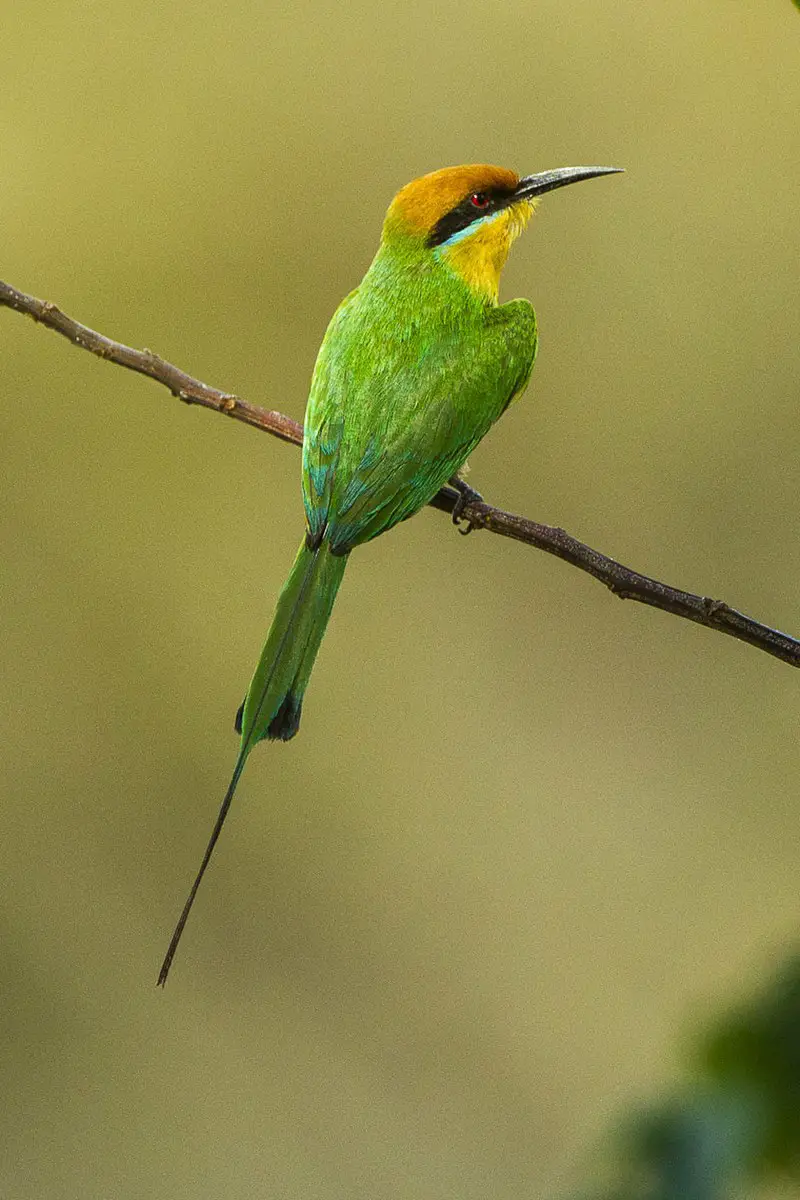
Böhm’s bee-eater is a type of bird found in the Democratic Republic of Congo, Malawi, Mozambique, Tanzania and Zambia. It belongs to the Meropidae family and was named after German zoologist Richard Böhm as a tribute for his scientific work.
These birds have bright plumage consisting mainly of shades of green with some black spots over their body and wings.
They build nests on banks near waterbodies such as rivers or lakes where they feed themselves by catching bees midair. Furthermore, these birds are also known to eat other insects like dragonflies, butterflies etc.
Moreover due to habitat loss caused by human activities there has been an alarming decline in the population size making them vulnerable according to IUCN red list assessment criteria.
Thus it becomes even more important that we take steps towards protecting this species from extinctionScientific classification:
| Kingdom | Animalia |
| Phylum | Chordata |
| Class | Aves |
| Order | Coraciiformes |
| Family | Meropidae |
| Genus | Merops |
| Species | M. boehmi |
3. Swifts
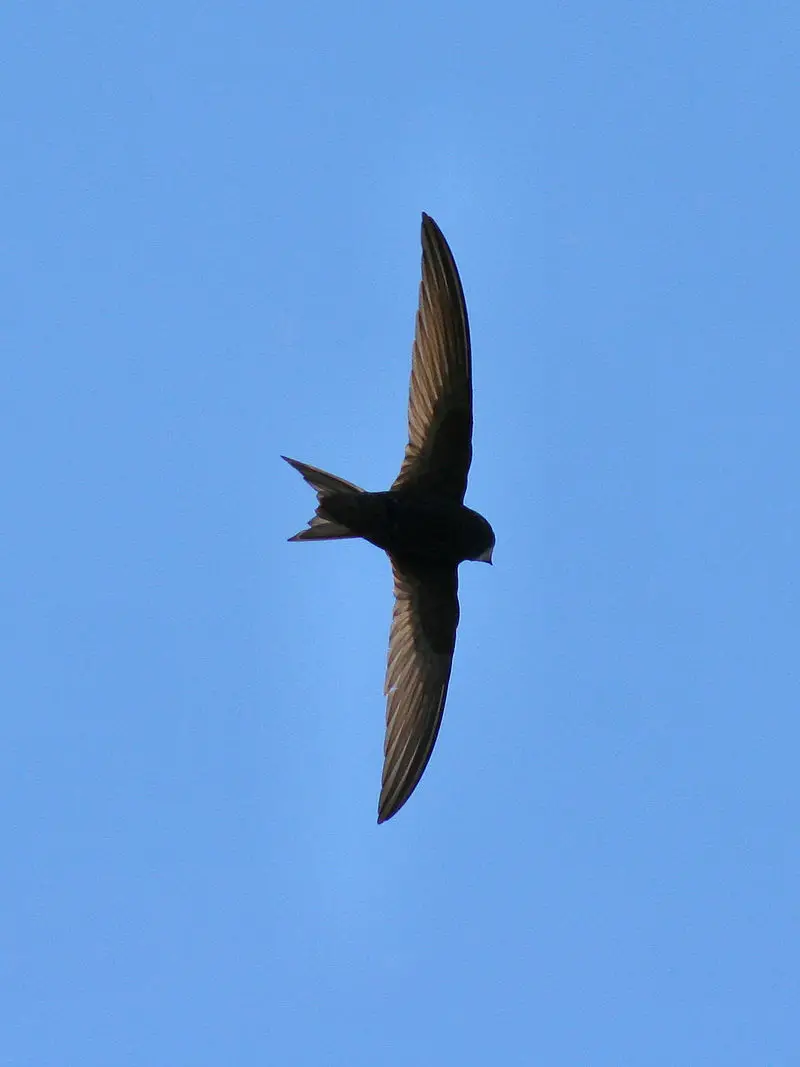
Swifts are small, aerial birds that belong to the Apodidae family. They look similar to swallows but they aren’t related in any way.
Swifts have evolved differently from other passerines and instead share an order with hummingbirds – the Apodiformes.
The Hemiprocnidae also shares a close relationship with swifts, being referred to as ‘treeswift’ due to their affinity for perching on trees rather than flying through the air like regular swifts do.
While these two species may appear quite similar at first glance, closer inspection will reveal vast differences between them which has come about over time via convergent evolution.Scientific classification:
| Kingdom | Animalia |
| Phylum | Chordata |
| Class | Aves |
| Order | Apodiformes |
| Family | Apodidae Hartert, 1897 |
Also Featured In: Turkey Birds You Should Know, Birds of Sweden
4. Mangrove Kingfisher
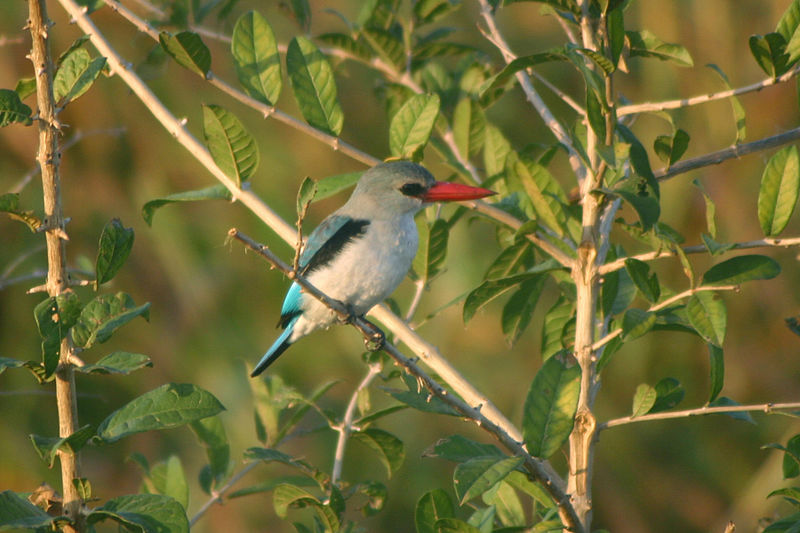
The Mangrove Kingfisher (Halcyon senegaloides) is a colorful bird found along the eastern coast of Sub-Saharan Africa.
Its appearance resembles that of the woodland kingfisher, sporting distinctive black and white stripes on its wings.
This species prefers to live in mangroves, riverside forests, and estuaries. The IUCN has listed it as being of least concern due to its broad range across Eastern Africa and stable population numbers.
It was first described by French naturalist Louis Jean Pierre Vieillot in 1817 from Senegal specimens he collected during his travels there with an expeditionary force led by General Charles Leclerc between 1802–1803 while they were en route to Haiti.
The Mangrove Kingfisher feeds mainly on small fish caught in shallow waters or insects gleaned from low vegetation near water bodies; making it both indispensable for maintaining healthy aquatic ecosystems but also entertainingly fun to watch.Scientific classification:
| Kingdom | Animalia |
| Phylum | Chordata |
| Class | Aves |
| Order | Coraciiformes |
| Family | Alcedinidae |
| Subfamily | Halcyoninae |
| Genus | Halcyon |
| Species | H. senegaloides |
5. Livingstone’s Flycatcher
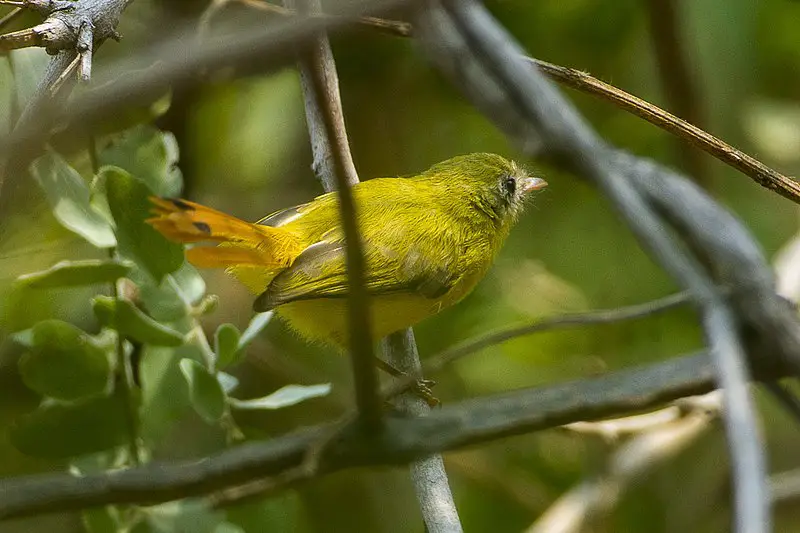
Livingstone’s flycatcher is a species of bird in the family Erythrocercidae. It lives primarily in dry forests and moist shrublands throughout Malawi, Mozambique, Tanzania, Zambia, and Zimbabwe.
These birds have mainly dark brown-grey plumage with white patches on their wings as well as pale blue or yellowish eyes and beaks that can vary from black to grey.
They are usually seen foraging alone or pairs during the day among trees looking out for food such as insects which they catch midair using their swift flight capabilities.
Livingstone’s Flycatchers also breed between September to May each year where they build nests made up of twigs near low shrubs close to water sources like rivers or streams so they can access fresh water easily when needed.Scientific classification:
| Kingdom | Animalia |
| Phylum | Chordata |
| Class | Aves |
| Order | Passeriformes |
| Family | Erythrocercidae |
| Genus | Erythrocercus |
| Species | E. livingstonei |
6. Racket-Tailed Roller
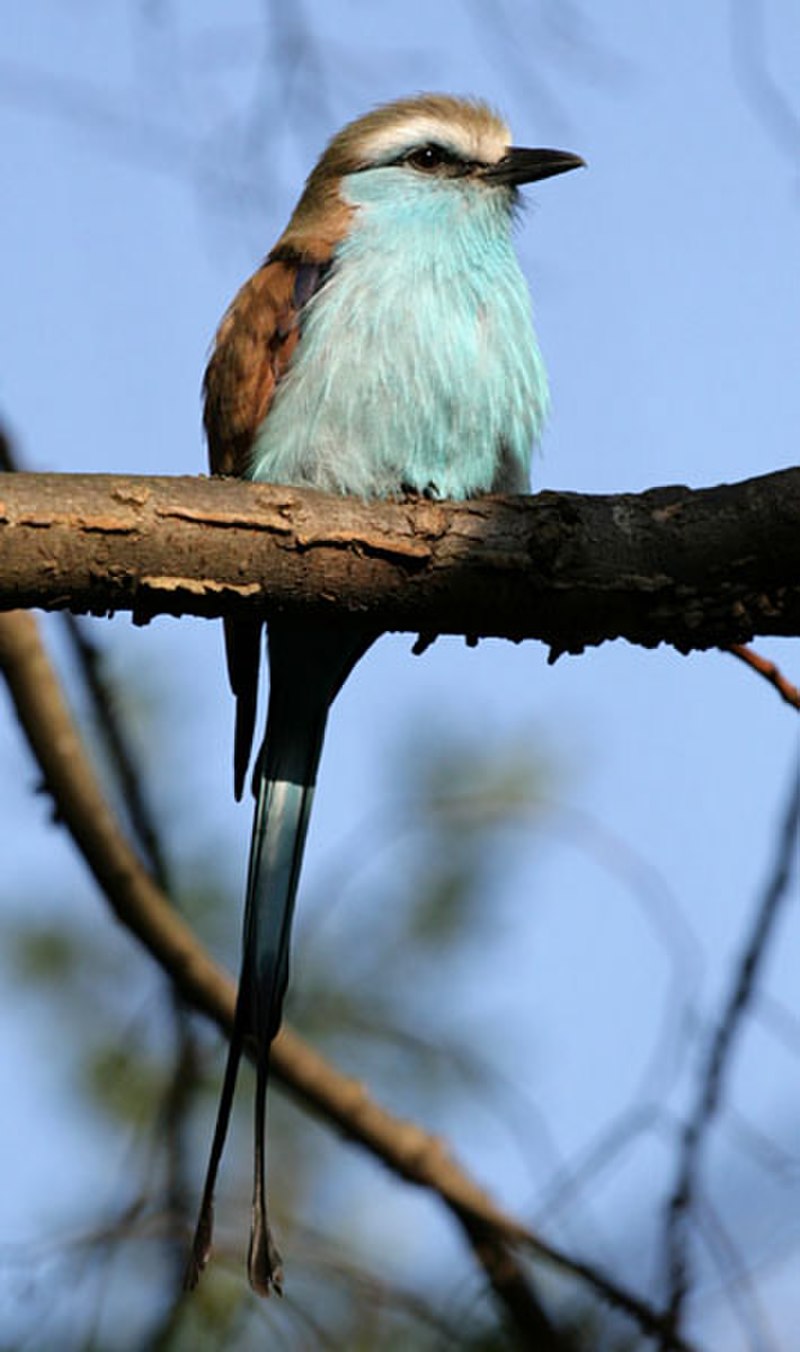
The Racket-tailed roller is a beautiful bird that can be found in Southern Africa. It belongs to the family Coraciidae and was formally described by Roland Trimen in 1880 under its current binomial name, Coracias spatulatus.
This species of bird ranges from Angola, south-eastern Democratic Republic of Congo and southern Tanzania all the way up to northern Botswana, Zimbabwe, Malawi and Mozambique.
The most distinguishing feature about this birds are their long tail feathers which have white tips at each end forming an unique “racket.”
They also have bright blue upperparts with black wings and a chestnut head along with pale yellowish breasts streaked brown or gray underneath.
These intelligent creatures feed mainly on insects such as beetles but they will also eat small fruits occasionally if available. In addition they enjoy bathing frequently during summer days making them even more fun to watch.Scientific classification:
| Kingdom | Animalia |
| Phylum | Chordata |
| Class | Aves |
| Order | Coraciiformes |
| Family | Coraciidae |
| Genus | Coracias |
| Species | C. spatulatus |
7. Narina Trogon
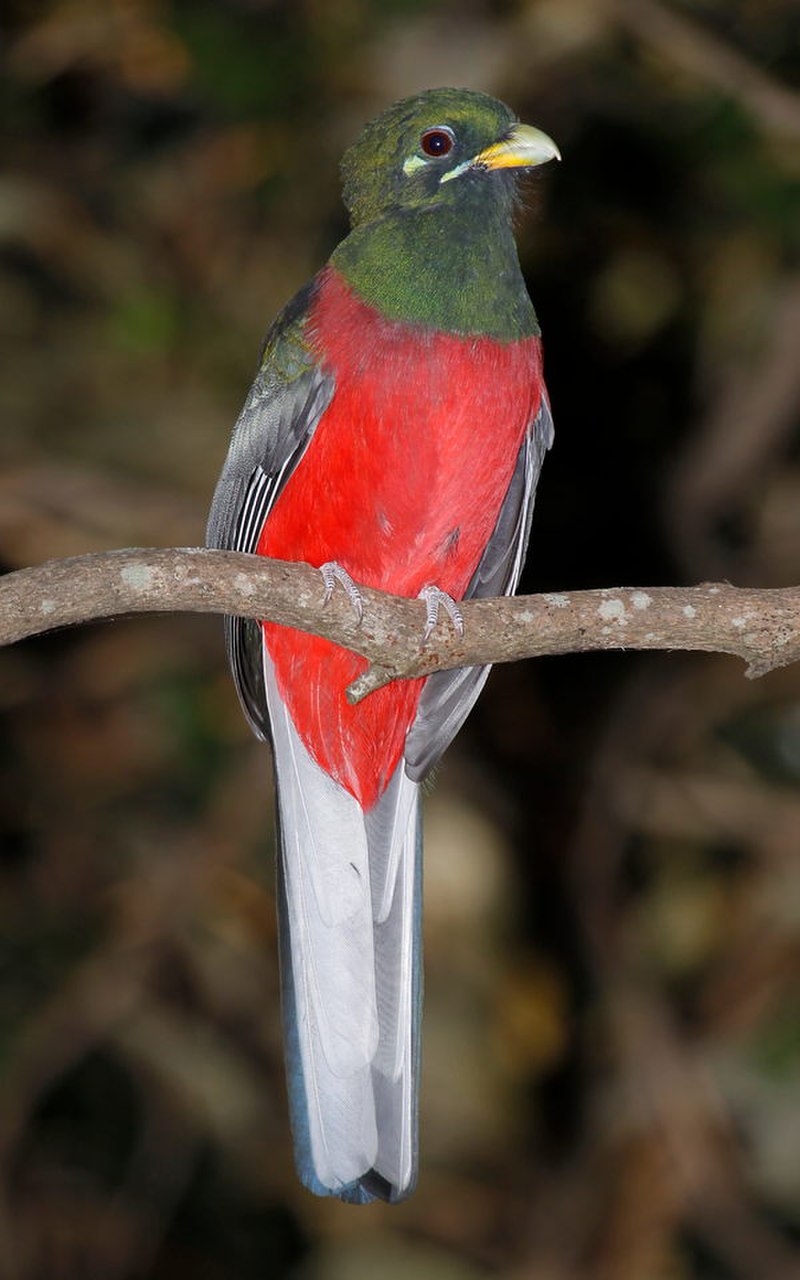
The Narina trogon is a beautiful bird native to forests and woodlands in the Afrotropics. It has a vibrant green head, chestnut neck with white feathers on its throat, bright red underparts and two long tail streamers tipped with black.
An average size of 32-34 cm makes it medium sized among other trogons species.
This highly adaptable species can survive in different environments but local populations have drastically decreased due to deforestation.
Some birds are sedentary while some undertake regular migrations from one place to another making them quite widespread across their range.
The Narina Trogon is an amazing sight for any nature enthusiast as they enjoy fluttering through the forest canopy.Scientific classification:
| Kingdom | Animalia |
| Phylum | Chordata |
| Class | Aves |
| Order | Trogoniformes |
| Family | Trogonidae |
| Genus | Apaloderma |
| Species | A. narina |
8. Chirinda Apalis
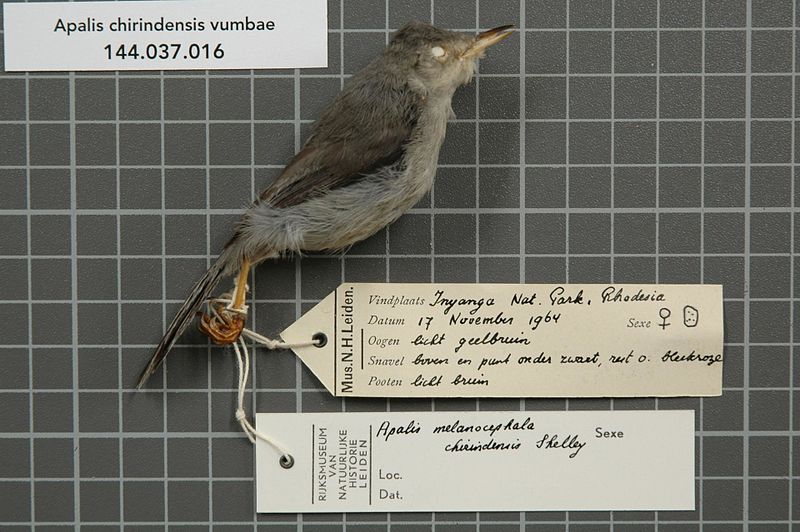
The Chirinda apalis is a species of bird in the family Cisticolidae, found only in the Eastern Highlands of Zimbabwe and Mozambique. Its preferred habitat is either subtropical or tropical moist lowland forest or montane forest.
These birds have greyish-brown upperparts with white underparts, making them particularly well camouflaged against their environment.
They feed on insects such as beetles and grasshoppers which they search for among leaves and branches; occasionally eating fruit too.
The song these birds produce consists of simple but varied whistles accompanied by trills at times during breeding season – usually between October to April – when they are more active than other times of year.Scientific classification:
| Kingdom | Animalia |
| Phylum | Chordata |
| Class | Aves |
| Order | Passeriformes |
| Family | Cisticolidae |
| Genus | Apalis |
| Species | A. chirindensis |
9. Red-Throated Twinspot
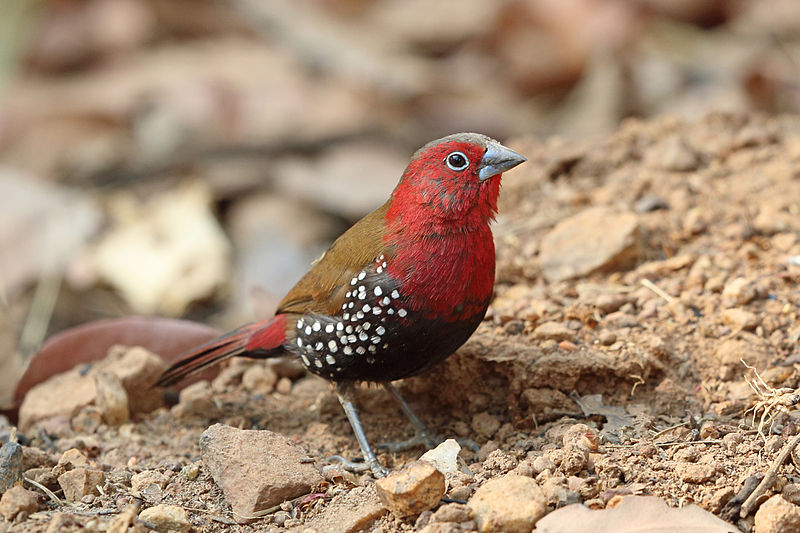
The Red-throated Twinspot is a common bird found in sub-Saharan Africa, with an estimated global range of 2 million km2. It can be seen in many countries such as Angola, Burundi, Congo, Kenya and more.
This species has a rounded head with two white spots on the back of its neck and rusty red colouring on its throat which gives it its name. Its wings are brownish grey while the tail feathers are black tipped with white.
The males have bright yellow eyes whereas females tend to have dull green ones; both sexes share similar plumage otherwise. These birds mainly feed off insects but may also eat some fruits or seeds when available throughout their large range spanning multiple countries in southern Africa.Scientific classification:
| Kingdom | Animalia |
| Phylum | Chordata |
| Class | Aves |
| Order | Passeriformes |
| Family | Estrildidae |
| Genus | Hypargos |
| Species | H. niveoguttatus |
10. Grey-Headed Kingfisher
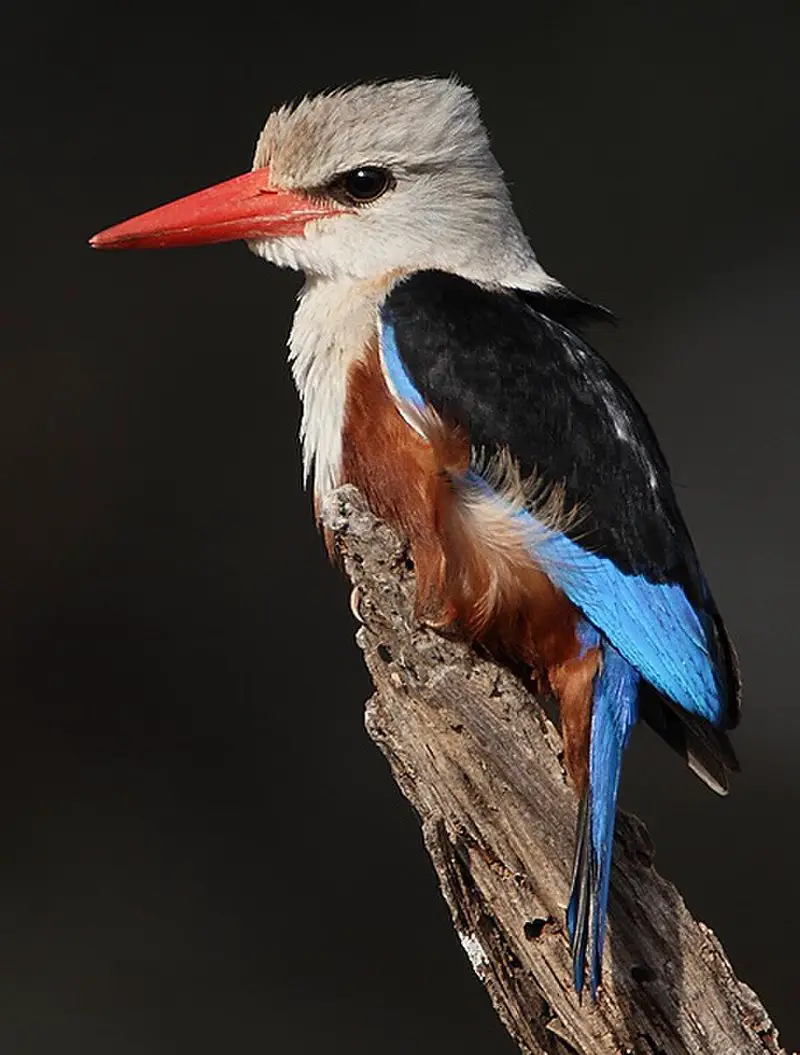
The Grey-headed Kingfisher is a stunning species of kingfisher that can be found across much of Africa and the Middle East. Its striking grey head, white neck, black back and wings with blue speckles make it an instantly recognizable bird.
It has been described formally by German zoologist Philipp Ludwig Statius Müller since 17.
This small but beautiful predator feeds mainly on insects such as beetles, grasshoppers and cicadas which they catch while hovering over water or in flight from perches up to 20 meters above ground level.
They are monogamous birds who will form lifelong pair bonds during mating season when males display courtship behavior including tail fanning and bill clacking displays at their chosen mate’s nest site.
These little birds play an important part in African ecosystems so we should all take care to preserve them for future generations.Scientific classification:
| Kingdom | Animalia |
| Phylum | Chordata |
| Class | Aves |
| Order | Coraciiformes |
| Family | Alcedinidae |
| Subfamily | Halcyoninae |
| Genus | Halcyon |
| Species | H. leucocephala |
11. Red-Eyed Dove
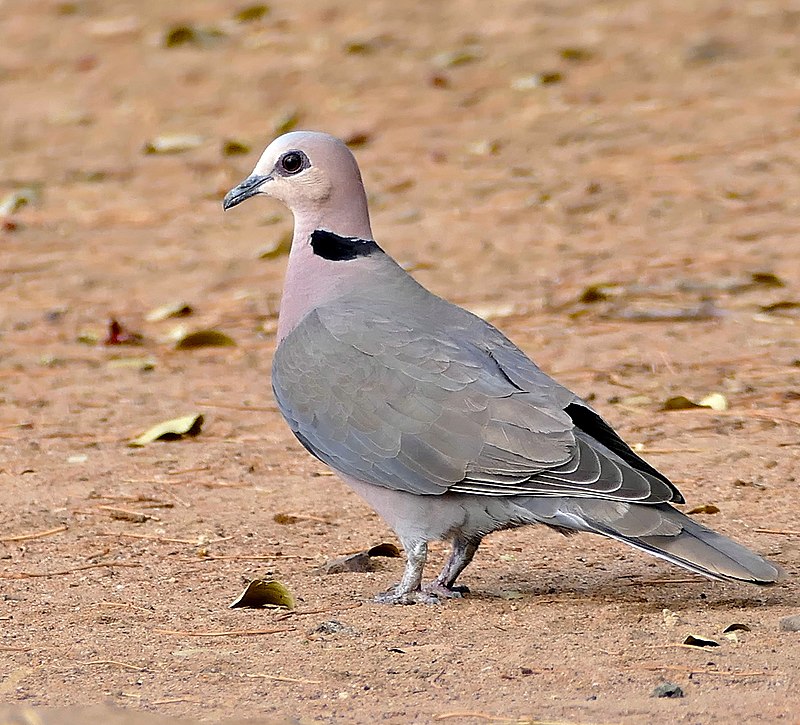
The red-eyed dove (Streptopelia semitorquata) is an attractive bird native to Sub-Saharan Africa. It was first described by German naturalist Eduard Rüppell in 1835, and since then has been listed as Least Concern on the IUCN Red List.
These birds have a distinct appearance with greyish brown upperparts, paler underparts and a distinctive half collar of dark feathers around their neck.
They also have bright red eyes that contrast sharply against their otherwise dull plumage.
The diet of the red-eyed dove consists mostly of seeds and grains found on the ground or from shrubs, but they will occasionally eat insects too.
All in all this species is quite common across its range making it one of nature’s most eye catching creatures.Scientific classification:
| Kingdom | Animalia |
| Phylum | Chordata |
| Class | Aves |
| Order | Columbiformes |
| Family | Columbidae |
| Genus | Streptopelia |
| Species | S. semitorquata |
Also Featured In: Native Birds of Equatorial Guinea,
12. Turaco
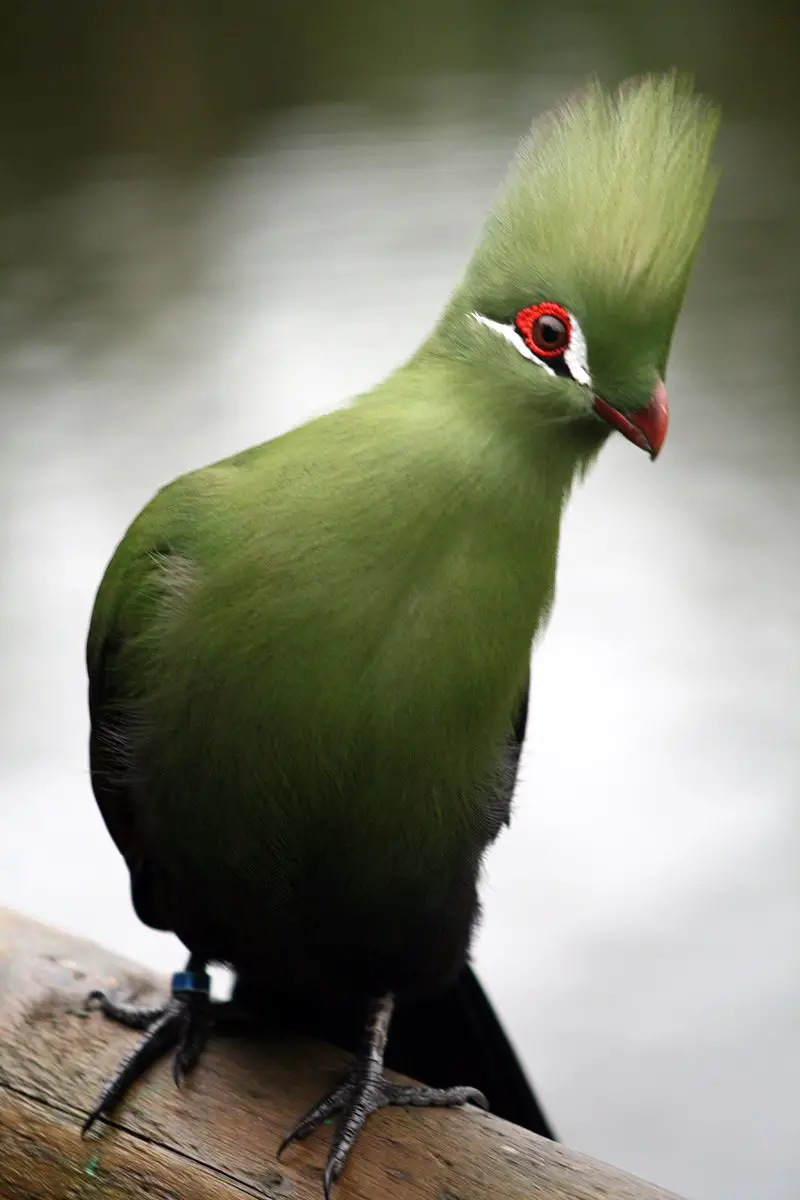
Turacos are a unique bird family that inhabit tropical and subtropical regions of Africa. They are also known as “banana-eaters” or “loeries” in southern Africa, due to their diet which consists mostly of fruit such as plantains.
These birds have an interesting semi-zygodactylous foot structure – the fourth toe can be switched back and forth while the second and third toes remain conjoined.
Turacos come in different sizes depending on species but they all generally boast bright colors like green, blue, purple or red feathers with vibrant yellow eyes.
In addition to being beautiful creatures, these birds make loud calls during mating season which makes them even more special.Scientific classification:
| Kingdom | Animalia |
| Phylum | Chordata |
| Class | Aves |
| Clade | Otidimorphae |
| Order | Musophagiformes Seebohm, 1890 |
| Family | Musophagidae Lesson, 1828 |
13. Livingstone’s Turaco
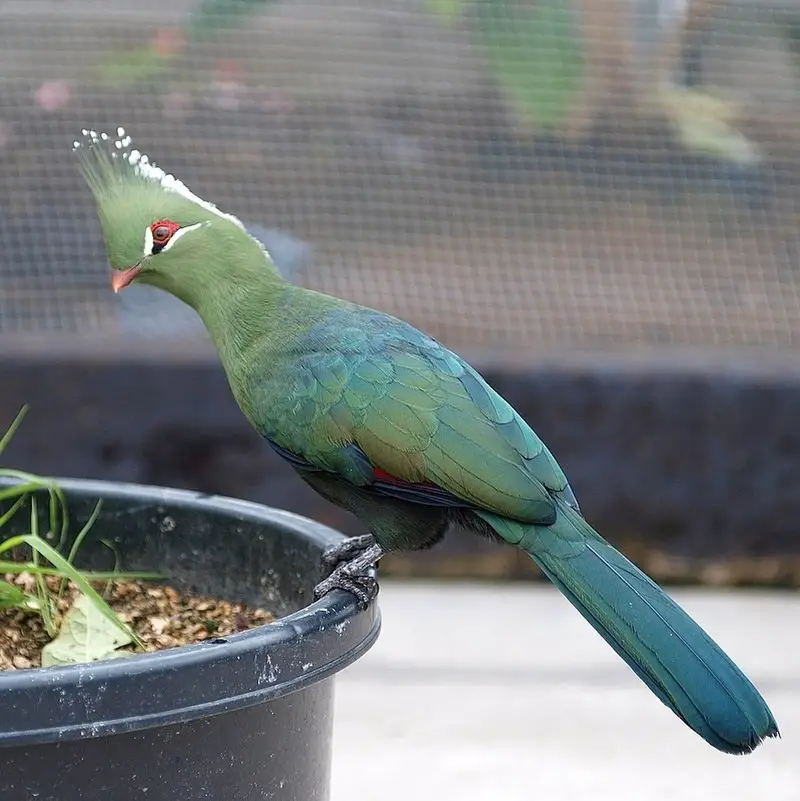
Livingstone’s turaco is a stunning and unique bird native to southeastern Africa. It was named in honor of Charles Livingstone, the brother of explorer David Livingstone.
This species can be found from Tanzania through Malawi, Zimbabwe, Mozambique and Burundi. The turaco has an unmistakeable appearance with its bright green feathers on wings and tail contrasted by red underparts that are speckled with blue-green spots.
Its bill is yellowish while its legs are dark grey or blackish in coloration. They prefer subtropical lowland forests but have been known to inhabit dry woodland areas as well where they often forage at ground level for insects like caterpillars or beetles along with fruit pulp and flowers buds from trees such as figs or mangoes which make up their diet..Scientific classification:
| Kingdom | Animalia |
| Phylum | Chordata |
| Class | Aves |
| Order | Musophagiformes |
| Family | Musophagidae |
| Genus | Tauraco |
| Species | T. livingstonii |
14. Green-Headed Oriole
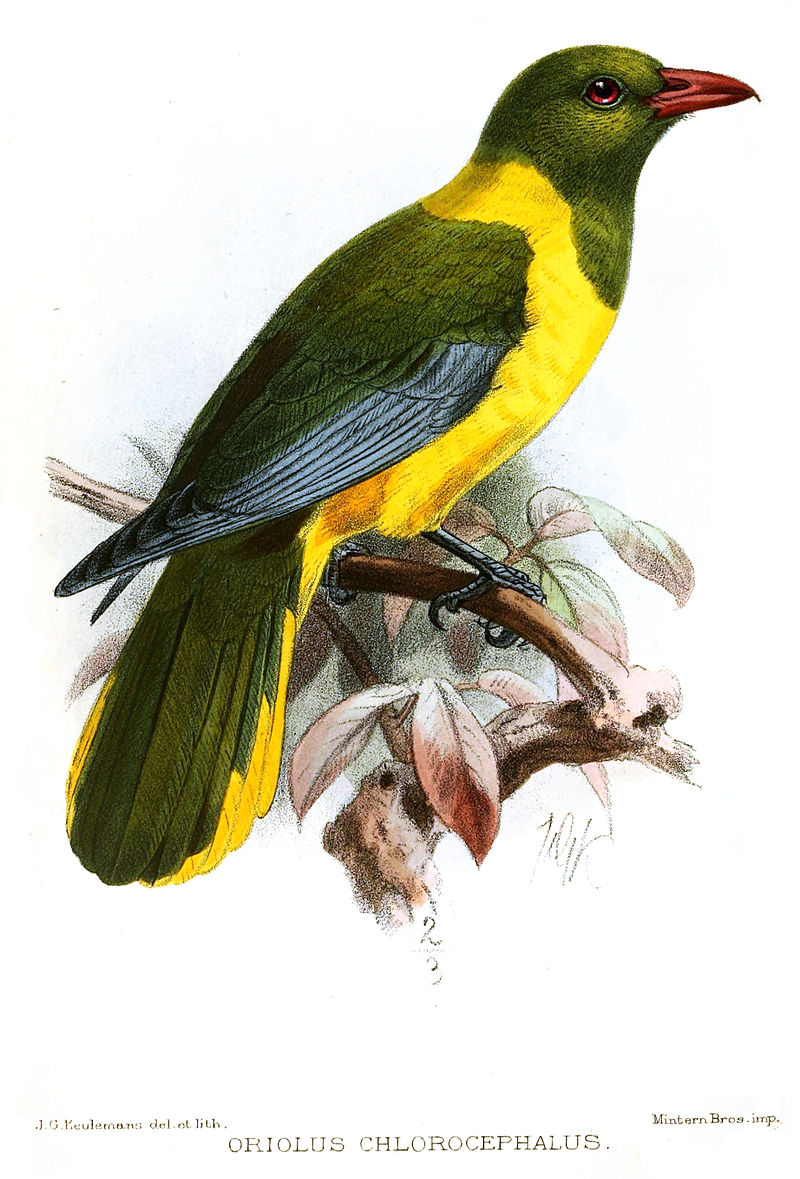
The Green-headed Oriole is a species of bird that can be found in Eastern Africa. It has three subspecies, including O. c. speculifer which is endemic to the region.
This vibrant oriole likes to inhabit dry lowland forests and moist montane forests alike – making it quite adaptable when it comes to its environment. Its diet consists mainly of fruit, seeds, nectar and insects or larvae; however they are also known for occasionally consuming small reptiles or amphibians too.
This beautiful bird gets its name from the bright green head feathers on males during breeding season – a sight truly worth beholding if you’re lucky enough to encounter one.Scientific classification:
| Kingdom | Animalia |
| Phylum | Chordata |
| Class | Aves |
| Order | Passeriformes |
| Family | Oriolidae |
| Genus | Oriolus |
| Species | O. chlorocephalus |
15. Lesser Seedcracker
The Lesser Seedcracker is a species of estrildid finch found in eastern Africa. It has an estimated global range of over 900,000 square kilometers and can be seen in Malawi, Mozambique, Tanzania and Zimbabwe.
This bird has been classified as being of least concern by the International Union for Conservation of Nature due to its wide distribution.
Its diet mainly consists out grains like millet and sorghum which it cracks open with its strong beak.
The lesser seedcracker prefers grassland habitats where there are plenty of seeds available for them to feed on but they have also adapted well to human made agricultural fields where crops provide abundant food sources all year round.Scientific classification:
| Kingdom | Animalia |
| Phylum | Chordata |
| Class | Aves |
| Order | Passeriformes |
| Family | Estrildidae |
| Genus | Pyrenestes |
| Species | P. minor |
16. Green Tinkerbird
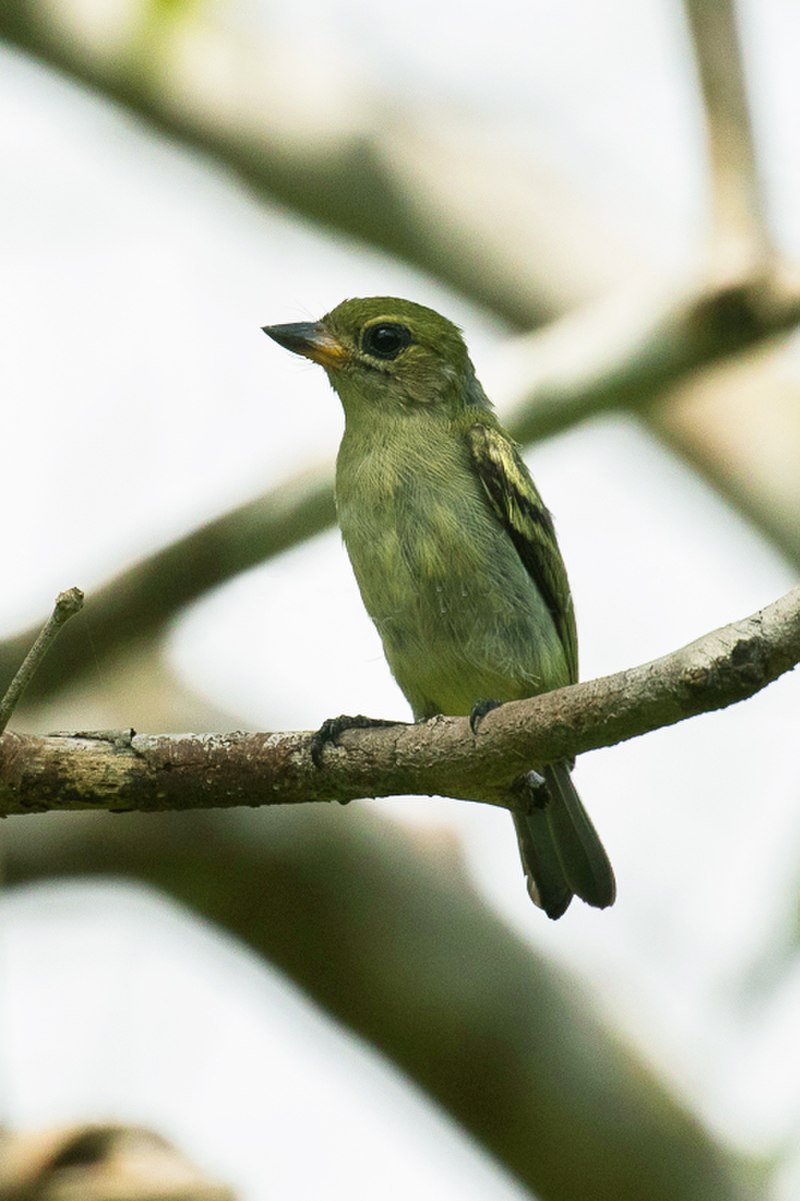
The green tinkerbird is a species of bird found in eastern Africa, including Kenya, Malawi, Mozambique and Tanzania. It belongs to the Lybiidae family (African barbets) and is part of the broadly-defined Pogoniulus genus.
This small dull-green colored bird has a short tail with white edges on its wings as well as yellowish underparts which are streaked with black markings. Its diet consists mainly of fruit and insects which it will forage from trees or shrubs while perched low down within them.
While they have an overall drab appearance compared to other Tinkerbirds their calls can be quite loud; consisting mostly of harsh squeaks that become more melodic during mating season when males sing up high in tree branches.Scientific classification:
| Kingdom | Animalia |
| Phylum | Chordata |
| Class | Aves |
| Order | Piciformes |
| Family | Lybiidae |
| Genus | Pogoniulus |
| Species | P. simplex |
17. Cape Gannet
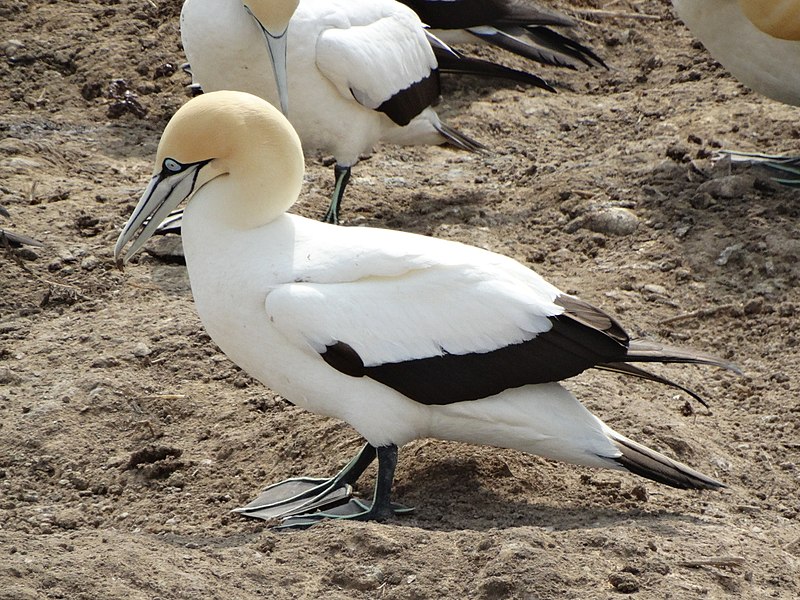
The Cape Gannet is a majestic seabird of the Sulidae family, easily recognised by its large size and striking black-and-white plumage.
Its head and hind neck are strikingly yellow while its pale blue bill is pointed with fine serrations near the tip.
These birds are renowned for their incredible diving abilities; they can plunge up to 25 metres underwater at speeds of over 60 kilometres per hour in pursuit of fish.
The gannets also work together as teams when fishing, creating impressive “bait balls” which draw shoals closer before being devoured.
Their diets mainly consist on small schooling fish such as sardines or anchovies but squid and crustaceans may also be eaten from time to time.
At sea, these remarkable creatures make an unforgettable sight – soaring gracefully above the waves or plunging beneath them in search of food.Scientific classification:
| Kingdom | Animalia |
| Phylum | Chordata |
| Class | Aves |
| Order | Suliformes |
| Family | Sulidae |
| Genus | Morus |
| Species | M. capensis |
18. Sooty Albatross
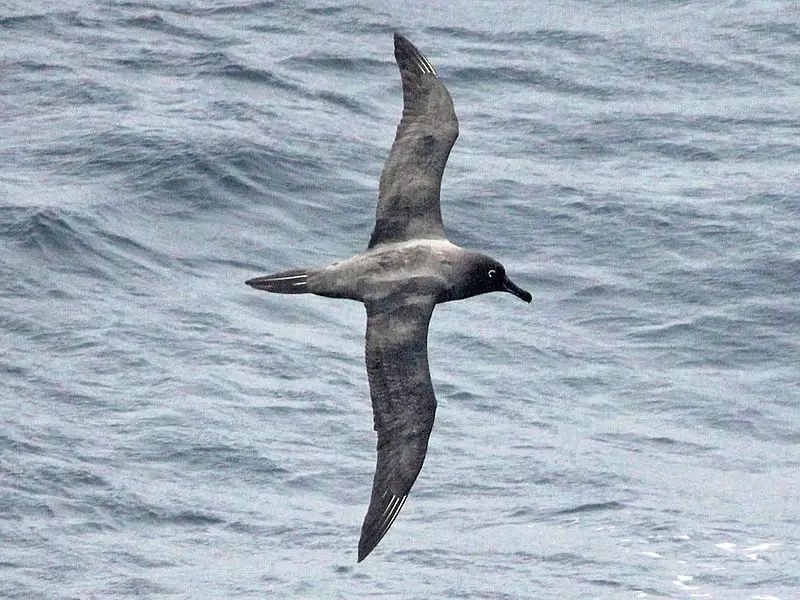
The Sooty Albatross is a species of bird in the albatross family, belonging to the order Procellariiformes. It is also known as Dark-mantled or Black-mantled Albatross.
They breed on sub-Antarctic islands and range at sea across the Southern Ocean from South America to Australia.
The sooty albatross stands out due to its dark brown plumage which appears almost black against sunlight when flying above water surface.
These birds feed mainly on fish but have been recorded eating squid, crustaceans and even carrion occasionally.
In terms of behavior, they are social creatures that often forage near fishing boats as well as congregating around floating objects like buoys or logs with other seabirds looking for food scraps left behind by them.
Overall, the sooty albatrosse lives an interesting life in southern hemisphere’s oceans while providing us with spectacular views during flight.Scientific classification:
| Kingdom | Animalia |
| Phylum | Chordata |
| Class | Aves |
| Order | Procellariiformes |
| Family | Diomedeidae |
| Genus | Phoebetria |
| Species | P. fusca |
Also Featured In: Birds That Live In Tristan da Cunha, Gough Island Birds You Should Know
19. Little Spotted Woodpecker
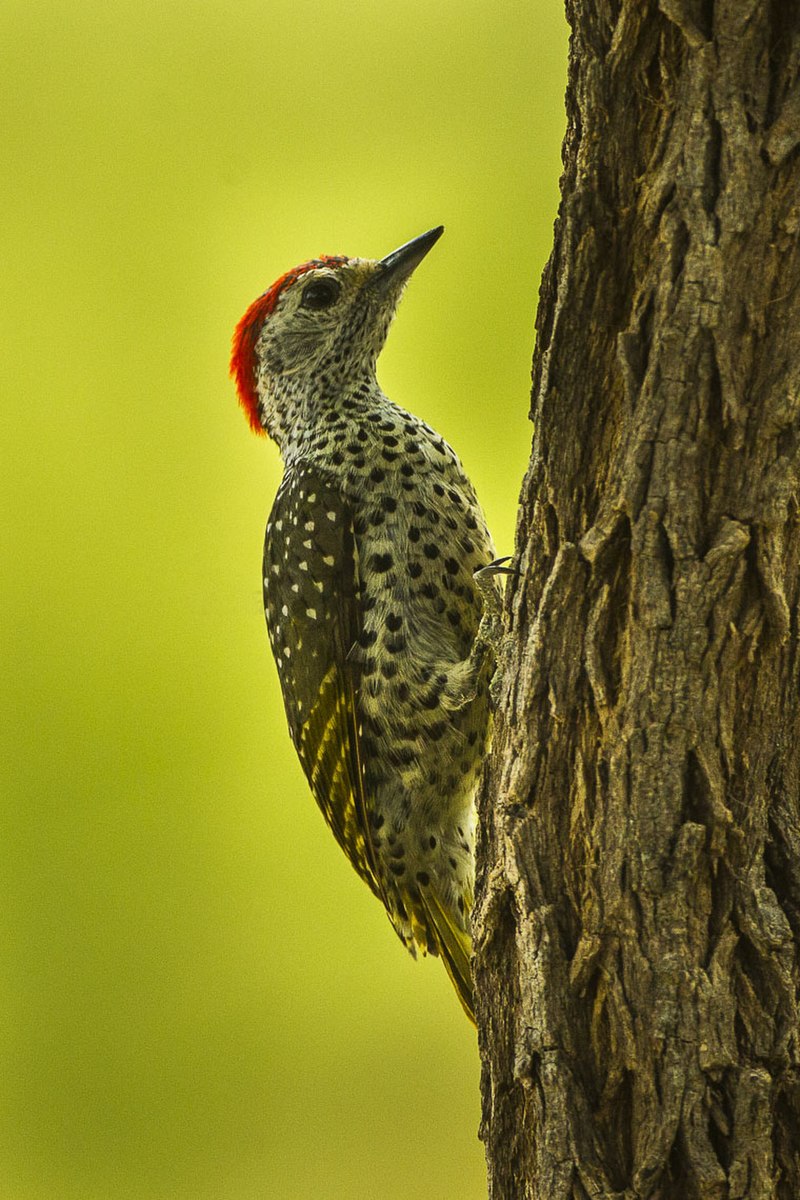
The Little Spotted Woodpecker is a species of bird native to tropical central Africa. It has an extensive range and is considered uncommon, but its conservation status is rated as least concern by the International Union for Conservation of Nature.
There are three subspecies known: Campethera cailliautii cailliautii, C. c. intermedius, and C. c reichenowi. This small species mainly inhabits woodland areas in lowland forest zones below 1000m altitude where it feeds on insects like beetles and ants along with larvae from trees or termites that they find while pecking into dead woody material looking for food sources; They also eat some fruits occasionally too.
The male little spotted woodpecker has black-and-white stripes across their head while the female lacks them; Both sexes have greenish/grey upperparts with yellow underparts as well as red crowns when breeding season comes around.
All in all ,the Little Spotted Woodpecker is an interesting bird that certainly deserves more recognition due to its unique features and wide distribution throughout Central AfricaScientific classification:
| Kingdom | Animalia |
| Phylum | Chordata |
| Class | Aves |
| Order | Piciformes |
| Family | Picidae |
| Genus | Campethera |
| Species | C. cailliautii |
20. Woodwards’s Batis
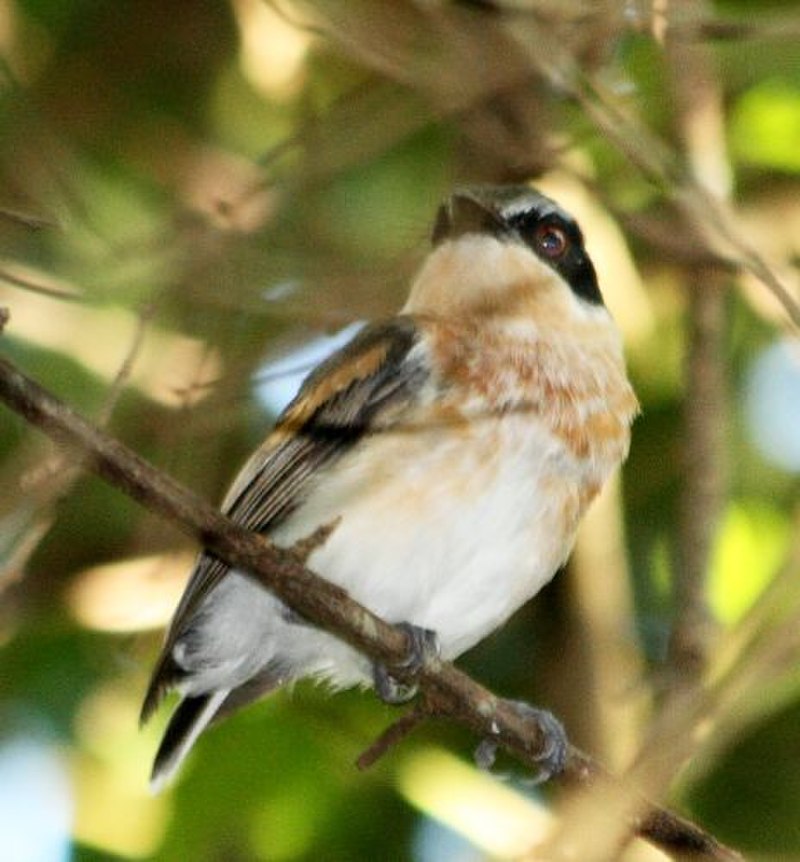
Woodwards’s batis is a species of small bird found in southeastern Africa. It has distinctive black and white plumage, with dark brown upperparts, whitish underparts and two prominent white wing bars.
The sexes are similar but the male has a brighter forehead patch than that of the female. This species can be found in woodlands and forests where it feeds on fruits insects or spiders amongst foliage or perched atop branches or trees.
As described by George Ernest Shelley, this bird is easily identified due to its unique characteristics including strong legs for climbing tree trunks; long curved bill used for probing deep crevices; narrow wingspan adapted to maneuvering through dense vegetation; large eyes providing excellent vision while searching out food items such as insect larvae and other invertebrates within bark crevices; glossy black feathers above contrasting starkly against its bright white underside making it visible even when at rest amid leafy coverings – an advantage particularly useful when trying to avoid predators like hawks.Scientific classification:
| Kingdom | Animalia |
| Phylum | Chordata |
| Class | Aves |
| Order | Passeriformes |
| Family | Platysteiridae |
| Genus | Batis |
| Species | B. fratrum |
21. Marsh Tchagra
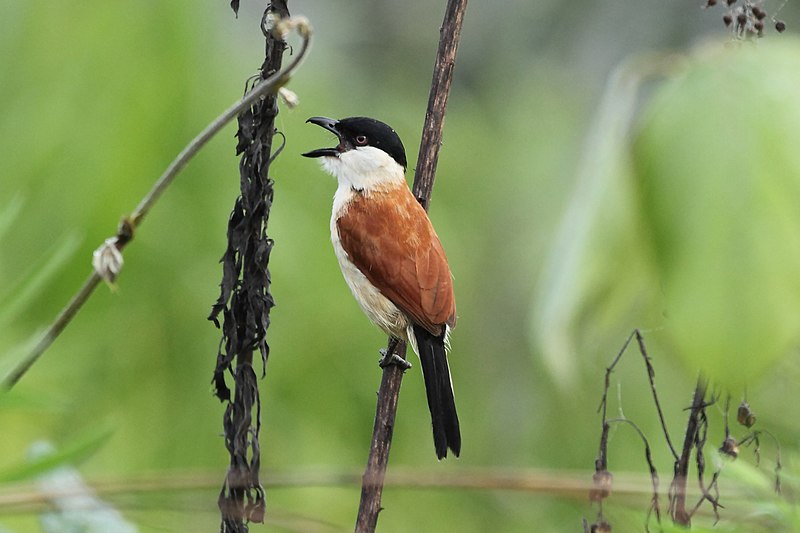
The Marsh Tchagra is a passerine bird belonging to the monotypic genus Bocagia in the family Malaconotidae. Native to African marshes, it was first described by German ornithologist Gustav Hartlaub under its binomial name Telephonus minutu.
It has grey-brown upperparts and a pale throat with dark stripes running down either side of its neck. The wings are blackish while its tail is brown and tipped white on each feather. Its abdomen is whitish-tipped buff color while underneath they have chestnut breast feathers that can be seen when in flight mode or during display behaviour such as song performances or courtship displays.
This species prefers wetland habitats, but will also visit dry grasslands for food searching activities like chasing insects from low vegetation surfacesScientific classification:
| Kingdom | Animalia |
| Phylum | Chordata |
| Class | Aves |
| Order | Passeriformes |
| Family | Malaconotidae |
| Genus | Bocagia Shelley, 1894 |
| Species | B. minuta |
22. Fulvous Whistling Duck
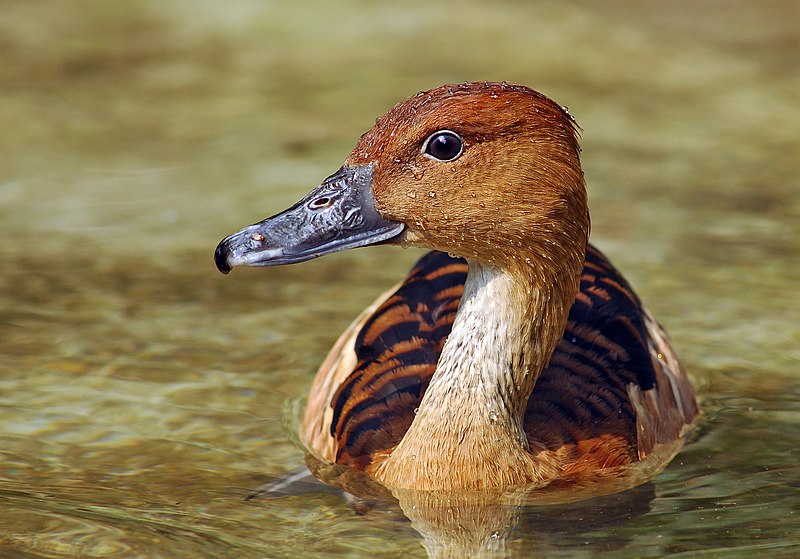
The Fulvous Whistling Duck is a species of whistling duck that can be found in tropical regions around the world.
It has a reddish-brown plumage, long legs and grey bill with distinctive white band across it.
This bird usually lives near water sources like wetlands or marshes where they feed on seeds, plants and small insects which make up their diet.
The male ducks are known to produce loud calls at night during breeding season as part of courtship rituals for attracting female partners.
They also congregate together in flocks when migrating from one area to another making them visible even from far distances.
Overall these amazing birds add beauty and joy to any natural environment.Scientific classification:
| Kingdom | Animalia |
| Phylum | Chordata |
| Class | Aves |
| Order | Anseriformes |
| Family | Anatidae |
| Genus | Dendrocygna |
| Species | D. bicolor |
23. African Snipe
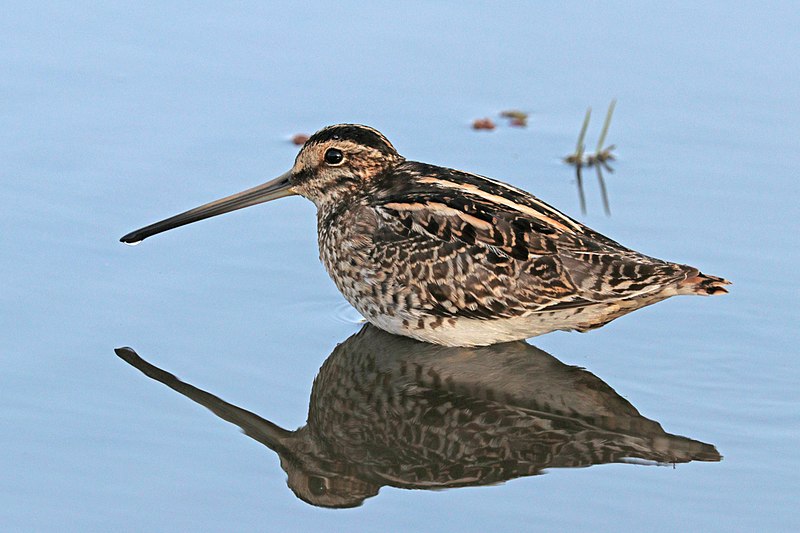
The African snipe is a small and stocky wader that inhabits wet mountain moorlands and swamps in eastern and southern Africa. It has an impressive range, breeding at altitudes of up to 4,000m yet dispersing widely into coastal lowlands when not nesting.
Its body measures 30-32cm long with relatively short legs for its size; it also possesses a distinctive bill which curves downward towards the tip. The plumage varies depending on season but generally consists of shades of browns streaked throughout with white spots on the wings.
In addition to this they have yellow eyes giving them an alert demeanour as they watch their surroundings intently searching for food such as earthworms or insects among vegetation or shallow water bodies nearbyScientific classification:
| Kingdom | Animalia |
| Phylum | Chordata |
| Class | Aves |
| Order | Charadriiformes |
| Family | Scolopacidae |
| Genus | Gallinago |
| Species | G. nigripennis |